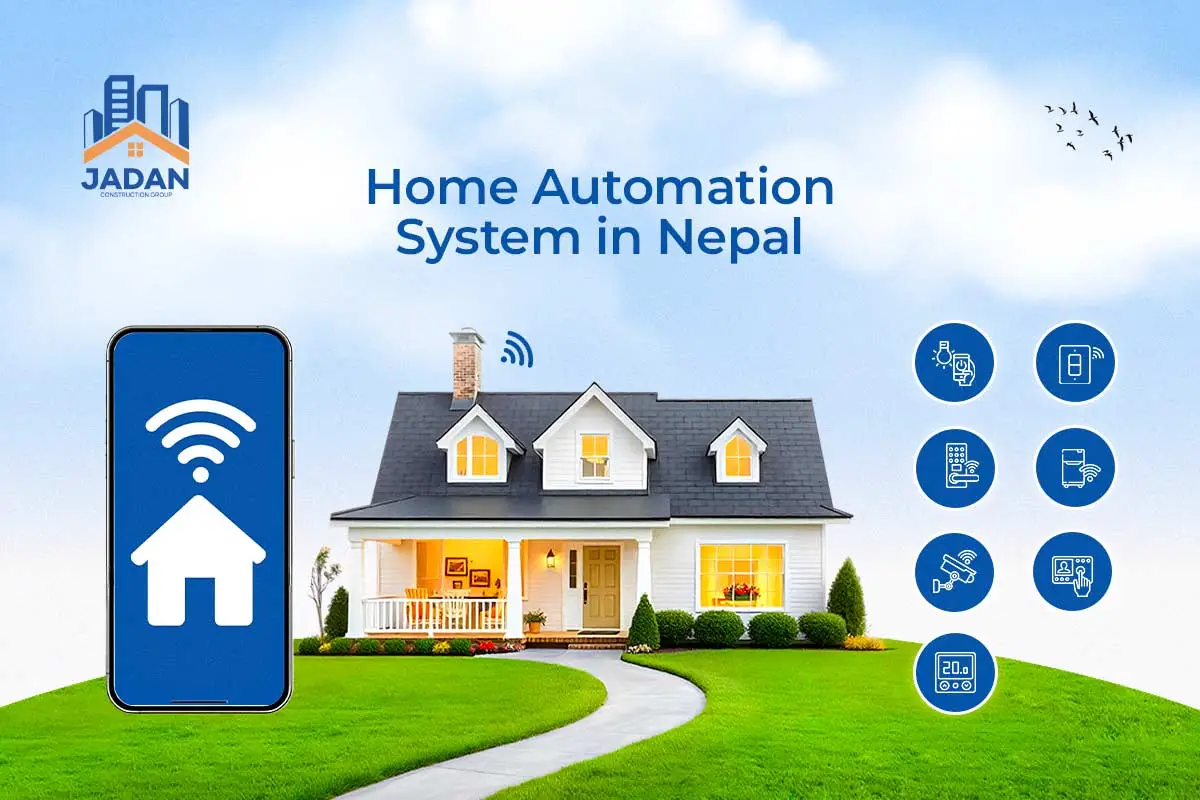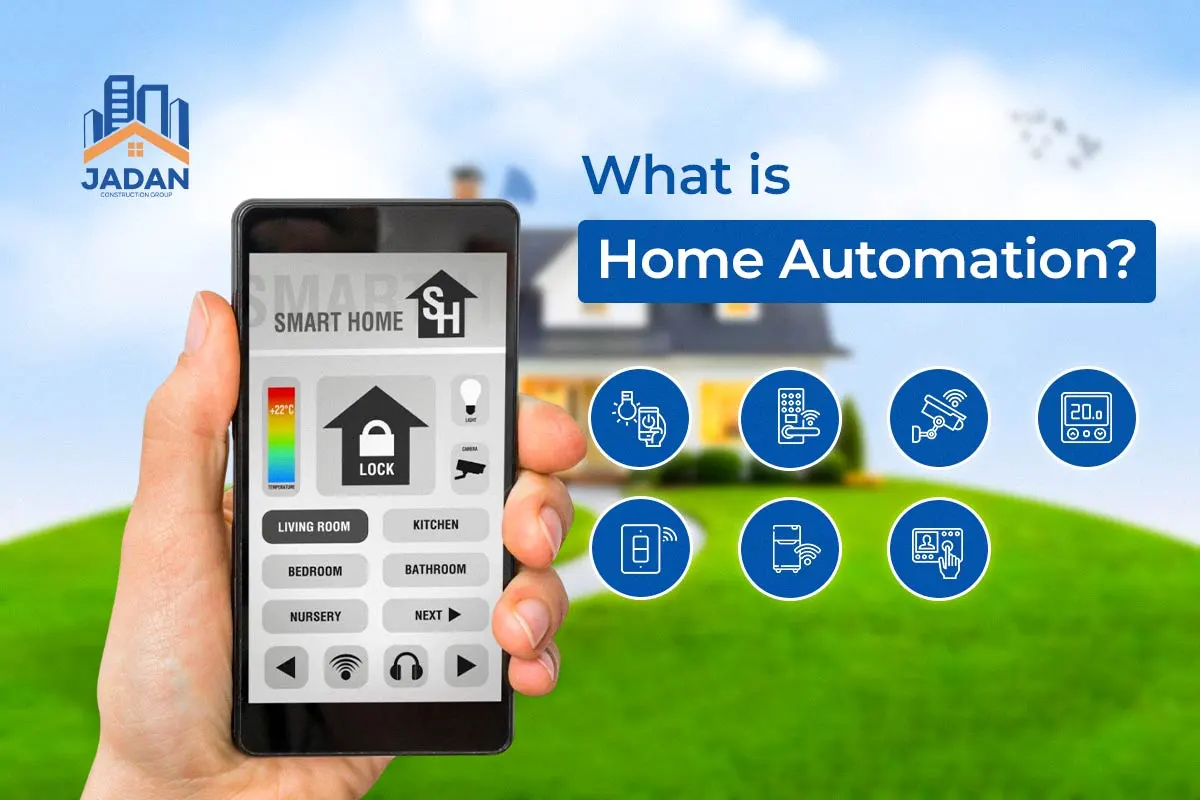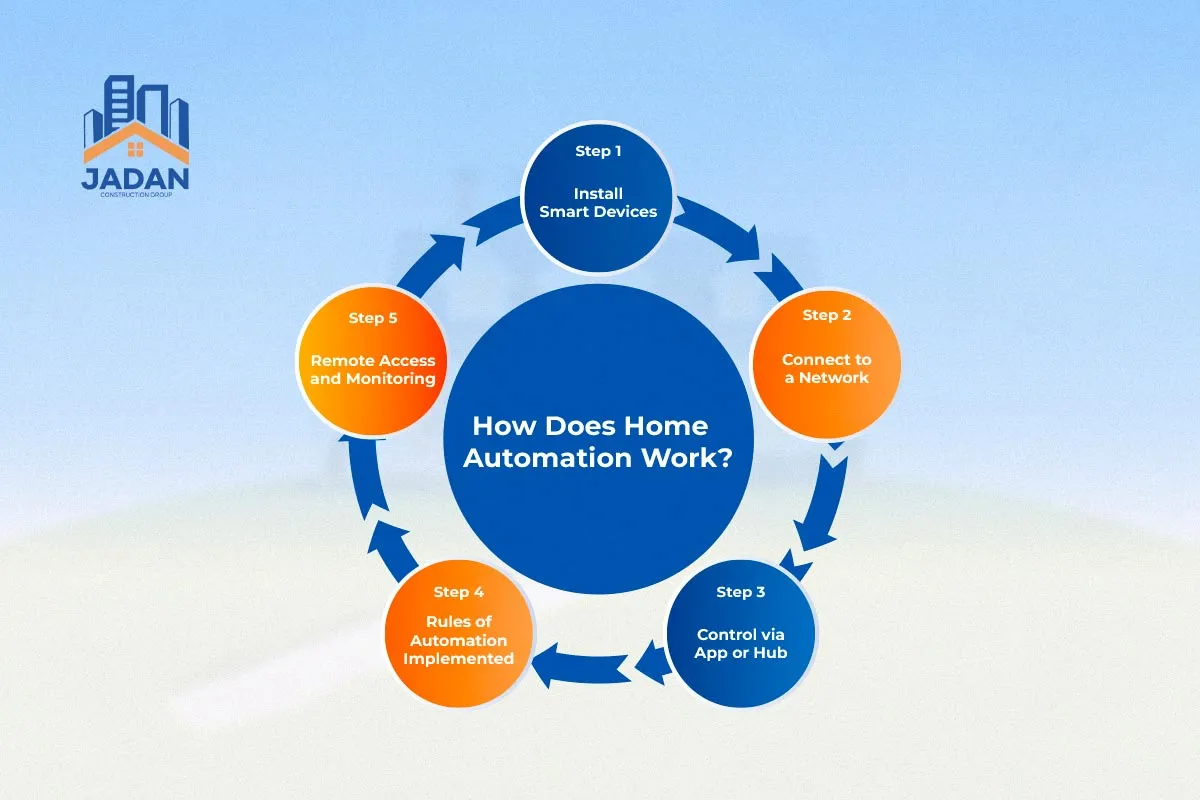
Just think of turning your lights, security cameras, and air conditioning on and off with a few taps on your phone, even while you are in Kathmandu traffic. This is what home automation is all about, whereby technology can make your home smarter, safer, and more energy efficient.
Home automation in Nepal is no longer a fantasy for Nepali homeowners and businesses. As the world has become smarter, with smart devices, dependable internet, and the need to be more secure, smart home automation has become a solution to contemporary life.
Home automation is smart technology applied to control and manage your house lighting, appliances, security, and entertainment functions using your smartphone or a central station. It enables you to oversee and control various components of your house when you are away, and daily living becomes more effective and integrated.

Home automation in Nepal has a number of advantages, such as convenience, enhanced security with smart locks and cameras, energy-saving as automated lighting and devices, and enhanced comfort as you customize your living space.
The automation of homes might appear to be complicated initially, but it does have a logical course. All these steps are significant in ensuring the smartening, safety, and efficiency of your home.

Let’s break it down in detail:
The first step starts with the installation of smart appliances like smart bulbs, cameras, thermostats, plugs, or door locks. They are made to substitute or upgrade the traditional appliances and fixtures so as to become more functional.
As an example, you would use a smart bulb that, upon command, can turn brighter or change color instead of a regular bulb. Likewise, a smart lock is an improvement on a regular one, and you can unlock doors using your phone rather than a key. The installation of these devices creates the basis of a smart home.
After installation, these devices have to communicate. This can be via Wi-Fi, Bluetooth, or custom smart home systems such as Zigbee or Z-Wave. A network is what forms the bridge between all your devices within a single system.
In Nepal, Wi-Fi networks are used by most homeowners to operate their smart homes, which may be influenced by internet connections and quality. The devices cannot transmit and target commands without a network connection, and then, a reliable internet connection becomes important.
Once connected, you are able to control your devices via a mobile application or a central station such as Amazon Echo or Google Home. These applications can be used to switch on or off devices, change settings, and even track real-time activity.
Your smartphone app can be used to, for example, turn off the lights in your living room when you are sitting in your bedroom. A hub simplifies this even more by connecting the various devices into a single platform, eliminating the need to use various apps.
This is where the intelligence of home automation lies; automation rules allow devices to respond independently of your input. An example is you may have your lights automatically switch off at sunrise or your air conditioning automatically switch on when the temperature goes up.
This kind of automation not only brings convenience but also conserves energy and improves security. Think about your doors automatically locking at night or lights turning on when there is movement in your home, these rules make your home address your lifestyles.
Lastly, home automation would enable you to monitor and manage your house anywhere in the world. You can check your cameras, switch appliances, or open doors, regardless of whether you are in Kathmandu, Chitwan or even back home, using your smartphone.
This feature offers security, particularly in terms of peace of mind. When someone comes to visit or deliver a parcel when you are away, you can see the visitor through your smart doorbell and even talk to them, meaning it is easy to access and secure your home regardless of your location.
Smart home automation devices in Nepal are becoming popular as technology is becoming cheaper and as internet connectivity increases. These gadgets not only make life easier, but they also enhance security, energy conservation, and modern comfort in everyday life. Let us discuss some of the most popular smart systems that can be found in Nepal today.
One of the most common points of home automation to start with is smart lighting. Using such systems, you will be able to remotely control lights, have them switch on or off, or even adjust their brightness or color using your phone. This provides convenience, and it can save a lot of electricity.
As an example, the Susanville residents of Kathmandu are able to choose lights that automatically turn on upon their arrival at home after work. Moreover, intelligent lighting enhances security by giving the pretence that no one is home, yet you are away on vacation.
One of the biggest reasons why Nepali families are opting to use smart home automation is security. Smart cameras will allow you to keep an eye on your house in real time, and the smart door locks will enable you to access the door in a keyless fashion (with a smartphone, PIN, or even fingerprint).
You can forget about being at home thinking about your front door; the ability to lock or unlock is accessible even when you are at work. The equipment is not only safer, but it also provides convenience since there is no use of physical keys that are prone to being lost or duplicated.
CCTV has been a long-term use to provide security in Nepal, but smart CCTV will go a notch higher. You can use mobile integration, live feeds, alerts, and even save the footage in the cloud. This will make sure that critical recordings are not lost even when there is a power outage.
Smart CCTV particularly applies to the business, apartment, and residential areas of high foot traffic, such as Kathmandu and Pokhara. These systems are motion-detecting and night vision cameras that provide you with peace of mind as they watch over the property 24 hours a day.
Smart thermostats enable you to control the temperature of your house from anywhere. They also know what you like after some time and automatically adapt to ensure that your home is comfortable, and you save energy.
As an example, your air conditioning can be configured to switch on immediately before you get back home after work in Chitwan, so that when you get to the house, you have the right temperature. This type of control will contribute to space reduction in terms of electricity costs and comfort.
Smart plugs and switches are very small and yet powerful accessories that can convert ordinary appliances into smart ones. You can remotely control devices such as TVs, fans, and kettles by connecting them to the mains, or they can be scheduled to use at specific times.
They are also more famous in Nepal due to their low cost and versatility. An example is, you can set your water heater to turn on early in the morning so that there would be hot water ready to use when you get up, without consuming power.
The use of smart kitchen appliances is simplifying the process of cooking. These devices save time and effort because of refrigerators that tell you when you are running out of food and ovens that can be used remotely.
Smart rice cookers, induction stoves, and coffee machines, which can be controlled with the help of mobile applications, are the most popular options in Nepal. Such inventions simplify day-to-day cooking routines and allow families to balance their hectic schedules.
Smart doorbells are an integration of a conventional doorbell, video, and two-way communication. When a person comes to knock on your door, you will be informed on your phone and receive a live video feed.
This comes in handy particularly in Nepali families, where deliveries and visitors are the norm. You are able to determine who is at the door, communicate with them remotely, and make a choice whether to open the door or not, adding both comfort and security to your home.
You do not need to make it complicated to start your smart home in Nepal. The step-by-step method will enable you to create a system that will suit your lifestyle and budget.
Here’s how to start your smart home automation journey in Nepal:
Although smart homes are gaining popularity, Nepali homeowners presently face several challenges that they should take into account. Such problems may influence the effectiveness of the operation of your automation system.
Some of the problems of home automation in Nepal are:
In Nepal, home automation is transforming the lifestyle of people by providing them with comfort, energy conservation, and enhanced security. These systems are introducing smartness to homes in the form of smart lighting, enhanced CCTV, and kitchen appliances that are making homes smarter and safer places.
Even though there are issues such as internet connection and increased initial expenses, the advantages greatly exceed the disadvantages. To Nepali families, smart home automation is a journey to the modern world of life by enabling them to enjoy comfort, safety, and efficiency in their daily lives.
Basic devices are affordable, but advanced systems with multiple features can be costly.
Yes, however, to be always used, you will need backup power, such as an inverter or solar.
The majority of these devices require Wi-Fi, but there are a few that also support Bluetooth or Zigbee hubs.
They will be secure when you have powerful passwords and keep the devices up-to-date.
Yes, most of them are easy to install alone, yet complicated systems can require assistance.